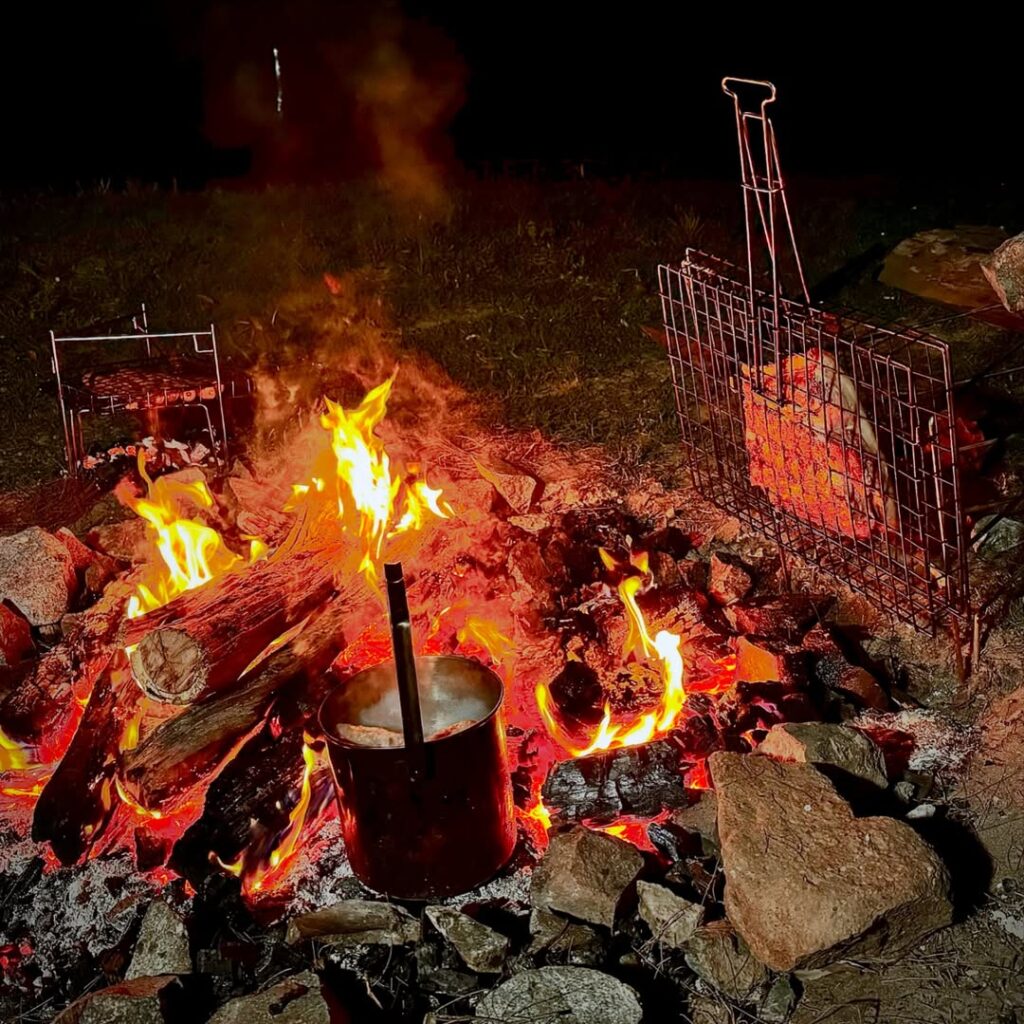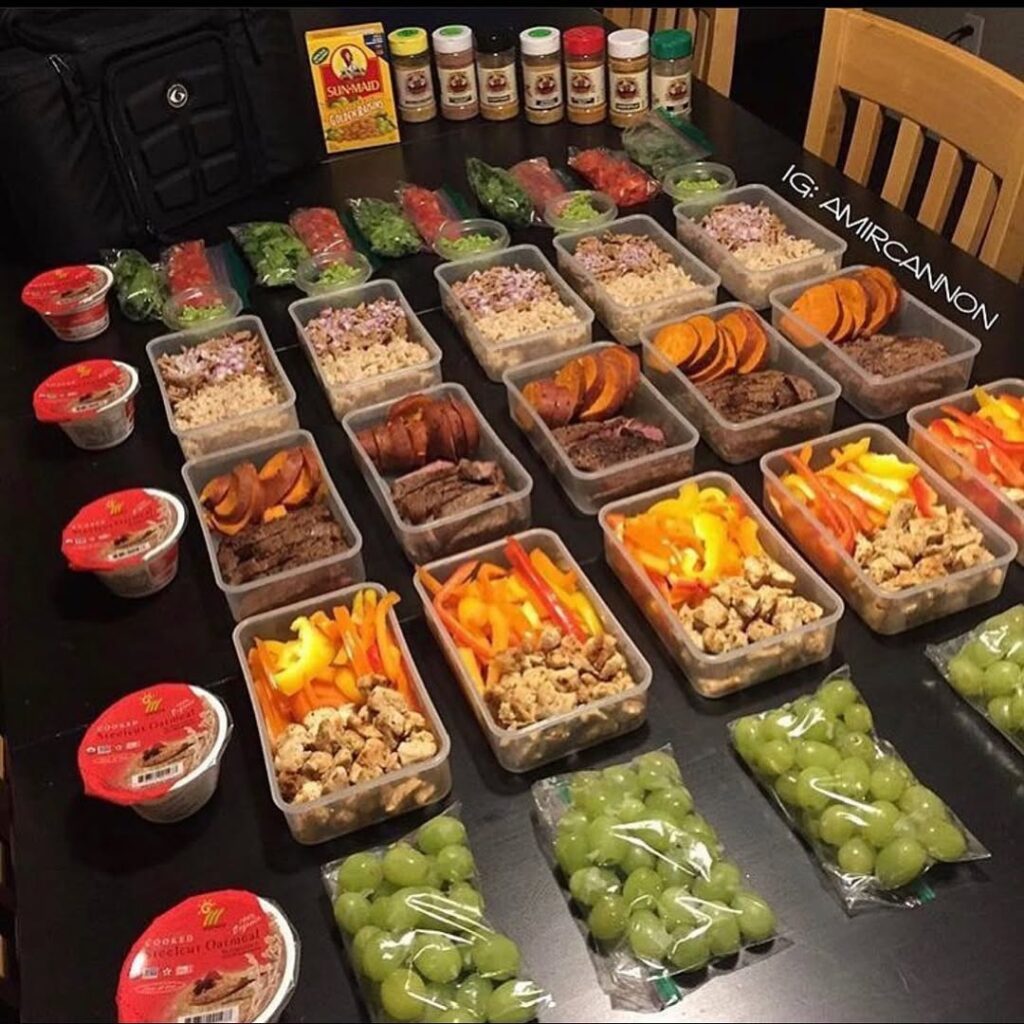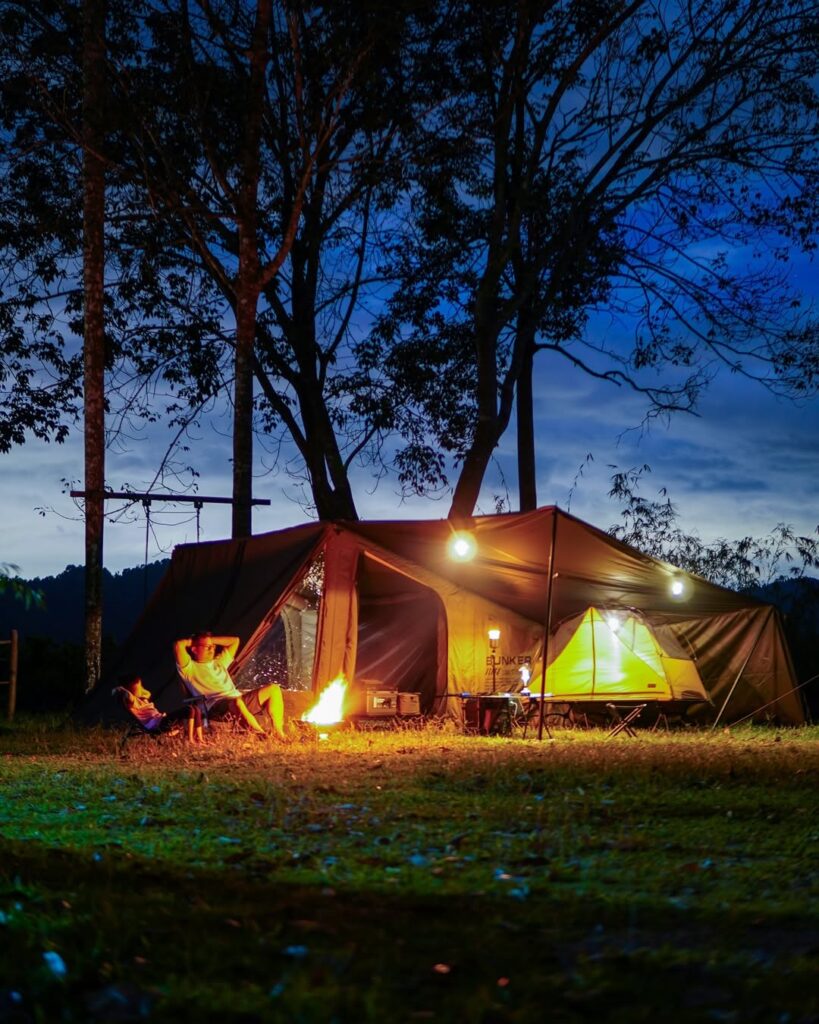Fire, Flavor, and Freedom
There’s something about cooking over open fire that makes even a simple meal feel legendary. The crackle of wood, the smell of smoke, the quiet hum of the forest – it all turns dinner into an experience.
And when you master how to grill while camping, that experience only gets better.
I’ve been hauling smokers and grates to campsites for years, and here’s what I’ve learned: you don’t need fancy gear to eat like a pitmaster outdoors. You just need good fire control, a few tools that earn their weight, and a clear head (preferably before the second beer).
Let’s break down the essentials for grilling while camping so your next meal under the stars tastes as good as it smells.
Why Campfire Grilling Is Worth It
Ask anyone who’s grilled over a campfire – food tastes different outside. Maybe it’s the smoke. Maybe it’s the effort. Maybe it’s the bugs trying to share your steak. But one thing’s certain: campfire grilling connects you to cooking in its rawest form.
The smoke adds depth you can’t fake, the heat dances differently, and the results are wildly satisfying. There’s no “set it and forget it” here – you’re part of the process. That primal feeling is what keeps campers coming back to fire cooking year after year.
Besides, everything tastes better when you’ve earned it under the stars.

Know Your Setup: Campfire vs. Portable Grill
Campfire Grilling
The classic move. You stack wood, spark a fire, wait for glowing embers, then throw a grill grate across a couple of rocks. The flavor? Pure smoke and flame. The downside? Campfires are unpredictable – wind, wood type, and moisture all affect heat.
Still, when you nail it, you’ll get that signature smoky crust you just can’t buy. Tip: keep the flame low and work over hot coals, not fire. Fire burns; coals cook.
Portable Camping Grills
If you’re after control and convenience, a portable propane or charcoal grill is your friend. They heat faster, cook evenly, and make it easier to time dinner before sunset. You trade a bit of rustic charm for reliability, but your steak won’t care.
They’re perfect for campgrounds that restrict open fires – or for cooks who prefer sipping whiskey to stoking flames all night.
Hybrid Setup
Here’s my favorite trick: light a campfire for ambiance, then shovel hot coals under your grill grate for consistent heat. It gives you the best of both worlds – campfire smoke and grill control.
You’ll look like you know what you’re doing, too. (Bonus points if you actually do.)
Choosing the Right Fuel
When learning how to grill while camping, the first real decision is your fuel – because that’s your flavor source.
Wood: Use hardwoods like oak, hickory, or mesquite. They burn steady and clean, adding rich smoke. Avoid softwoods like pine – they’ll coat your food in sticky sap and harsh smoke.
Charcoal: Easier to transport, consistent heat, and predictable burn time. If you’re in a national park or dry area, this is often the safest bet.
Propane: No ashes, no sparks, just easy control. It’s less romantic, sure, but when you’re cooking for a hungry crew after a hike, convenience wins.
Whichever you choose, respect fire bans and follow Leave No Trace principles. Your dinner shouldn’t come with a side of wildfire.
Essential Gear for Camp Grilling
Here’s the truth: you don’t need a truckload of gadgets – just smart tools that earn their place.
Must-Haves
- Portable grill grate or basket: lets you cook over any campfire or pit.
- Long-handled tongs and spatula: because burnt knuckles aren’t seasoning.
- Heat-resistant gloves: grip hot metal safely.
- Cast-iron skillet: for searing, sides, or fish.
- Cooler with ice packs: keeps food safe.
- Meat thermometer: because “medium rare” shouldn’t rely on moonlight.
Nice-to-Haves
- Chimney starter: fast, even charcoal lighting.
- Aluminum foil: the Swiss Army knife of cooking.
- Reusable utensils and plates: less waste, more flavor.
- Grill brush: for quick cleanups.
Remember: every ounce of gear should justify its weight in flavor.

Food Prep Before You Hit the Campsite
Outdoor cooking starts in your kitchen, not at your campsite.
Marinate and pre-season your proteins at home, then store them in resealable bags. Chop veggies, portion sauces, and pack everything labeled and organized. It saves time and keeps the campsite clean.
Stack your cooler strategically: raw meats at the bottom, veggies and snacks on top. Freeze bottles of water – they double as ice packs and drinking water later.
And here’s a pro tip: pre-cut, pre-season, pre-pack. That way, you can focus on grilling, not hunting for a knife when the sun’s down.
How to Build the Perfect Campfire for Grilling
Step 1: Safety First
Pick a flat, open area away from dry brush or low branches. Clear a 5-foot radius, then dig a shallow pit if needed. Keep a bucket of water or sand close – insurance you’ll hopefully never need.
Step 2: Build the Fire Base
Start with small sticks and kindling. Stack in a teepee or log-cabin shape for airflow. Once it’s burning strong, add thicker logs or charcoal.
The goal is to burn down to glowing embers – that’s your real cooking heat. Flames look cool in photos but cook unevenly.
Step 3: Manage the Heat
Spread the embers evenly with a stick or shovel. Keep a few thicker logs at the side to feed new coals later.
Hold your hand near the grill:
- 2 seconds = too hot.
- 4 seconds = perfect sear zone.
- 6 seconds = low and slow.
Step 4: Set the Grate
Place your grill grate about 4–6 inches above coals. That’s your sweet spot. If you’re improvising with rocks or a tripod, just make sure the setup is stable. Nothing kills a meal like your steak in the ashes.
What to Cook: Camp-Friendly Grill Recipes
When you think about how to grill while camping, keep your menu simple and quick. You’re here for the view, not a six-hour brisket.
Go-to Meats:
- Burgers & sausages: forgiving and fast.
- Chicken skewers: easy to flip, easy to share.
- Steak: flank, skirt, or sirloin – cook over hot coals for that caramelized crust.
Vegetables:
- Foil packet veggies: potatoes, peppers, and onions with oil and salt.
- Corn on the cob: in foil with butter and chili powder.
- Grilled bread: brush with garlic oil and toast over low heat.
Desserts:
- S’mores, obviously.
- Or get fancy: grilled peaches with cinnamon and honey.
Keep it rustic. Campfire meals aren’t about precision – they’re about good smoke, good timing, and better company.
Heat Management: The Secret to Great Camp Grilling
The biggest rookie mistake? Cooking over open flames. Fire scorches; coals cook.
Set up two heat zones:
- One side with direct, high heat for searing.
- Another cooler side for finishing and resting.
You can manage this by shifting coals or raising your grate. Once the meat hits temp, rest it for 5–10 minutes to keep those juices where they belong.
Remember: you’re the thermostat. There’s no dial out here – just patience and practice.

Cleaning Up and Storing Gear
Grilling’s fun. Cleaning? Not so much – but it matters.
- Scrub the grill grate while it’s still warm. Ash wipes off easier.
- Use biodegradable soap and minimal water for washing.
- Pack out all trash, even food scraps – they attract wildlife.
- Dry everything before storing to prevent rust.
The goal is to leave the site looking untouched. The only thing you should leave behind is the smell of good smoke.
Pro Tips from the Trail
- Bring extra foil – you’ll use it for everything.
- Pre-soak wooden skewers to keep them from burning.
- Wrap delicate foods in foil or cook in cast iron.
- Use herbs or wood chips to add quick smoke flavor.
- Windy day? Build a foil wind shield around your cooking area.
- And always – always – bring more matches than you think you’ll need.
Little things make big differences when your kitchen is made of fire and air.
Common Mistakes to Avoid
- Cooking over flames: patience, my friend. Let them die down.
- Overcrowding the grill: air needs space to circulate.
- Skipping preheat: that’s how food sticks.
- Using the wrong wood: softwoods = bad flavor.
- Forgetting to rest meat: your steak worked hard. Let it breathe.
Most grill fails come from impatience or distraction. Handle your fire, then your drink. In that order.
Campfire Cooking Liberation
Once you learn how to grill while camping, your whole idea of outdoor food changes. You stop thinking of it as “roughing it” and start seeing it as eating better with fewer tools.
Grilling at camp isn’t just about food – it’s about process. Fire teaches patience. Smoke rewards timing. And flavor is your trophy at the end.
So pack your grate, your tongs, and maybe a little whiskey. The stars are waiting, and dinner’s about to get smoky.
Featured image credit: @raynesys

